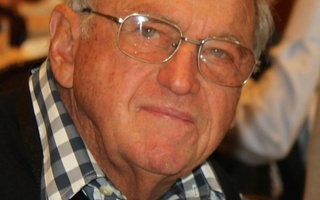Harvard scientists have developed a coating for medical devices that repels blood and bacteria, researchers announced last Sunday.
The developers at the Wyss Institute for Biologically Inspired Engineering have received approval for their coating, the Tethered-Liquid-Perfluorocarbon, from the Food and Drug Administration.
According to Professor Donald E. Ingber, Founding Director of Harvard’s Wyss Institute and senior author of the study, the ability of TLP to act as a repellant is “almost like when you ice-skate and water forms between the ice and the blade.” Unwanted materials will “skate” off of the coated surface.
The technology stemmed from the brainchild of co-author Joanna Aizenberg, who developed a technology in 2011 called Slippery Liquid Infused Porous Surfaces, a coating that repels virtually every liquid and solid. TLP is different from SLIPS in that TLP is specifically catered to the medical industry.
Ingber pointed out that the creation of SLIPS was “inspired by the pitcher plant” which is lined with a slippery material that captures its prey.
Ingber said that he received a grant from the government to carry out the research, a reflection of the potential use of the technology.
“The military wanted us to treat blood infections by cleansing and treating bacteria without coagulant,” Ingber said. “With the government funding, they wanted us to do this as quickly as possible.”
The team exceeded expectations. Within two to three years, the Wyss research team of 20 people emerged with a solution that “works incredibly well” to repel bacteria, according to Ingber.
“We believe that the anticoagulant and antifouling coating technology has the opportunity to broadly impact the medical industry in the near term,” said Eric Devroe, entrepreneur in residence at the Wyss Institute. The coating has the potential to prevent infection in medical operations such as transplants.
Despite their recent success, the team does not have plans to slow down just yet; the team members' next step is to commercialize their product. According to Devroe, “Our internal research and business teams have been prioritizing potential applications with the external stakeholders from diverse industries.”
Ingber stressed the importance of innovation in biotechnology. In giving advice to aspiring biomedical engineers he said, “Find problems that are big and learn how to collaborate.”
Read more in University News
Professor Outlines Risks, Benefits of Genome EditingRecommended Articles
-
Harvard Scientists Dive Into Structure of Bacterial GenomesHarvard scientists have unraveled the inner architecture of bacterial genomes in a breakthrough discovery that may shed light on how chromosomes organize within a cell.
-
Professors Encode with E. ColiResearchers at Harvard and Tufts have devised a groundbreaking new method of encryption that utilizes color-coded E. coli to hide messages.
-
Researchers Trace Evolution of Cystic Fibrosis InfectionThe scientists, using DNA sequencing technology, were able to retrace the evolution of specific bacteria and identify 17 adaptive genes that increase bacterial survival.
-
Wyss Institute Aims to Transform Drug TestingWith the aid of pharmaceutical companies and multiple federal agencies, researches at the Wyss Institute have undertaken research that could revolutionize the drug testing process.
-
Researchers Examine Effect of Timing on MutationsTiming may play a more important role in the survival of evolutionarily beneficial mutations in bacteria than previously thought, a discovery which might have implications on cancer research, according to a study by Harvard researchers released last month.
-
 Largest Donor to Harvard Doubles Gift to Wyss Institute
Largest Donor to Harvard Doubles Gift to Wyss Institute













